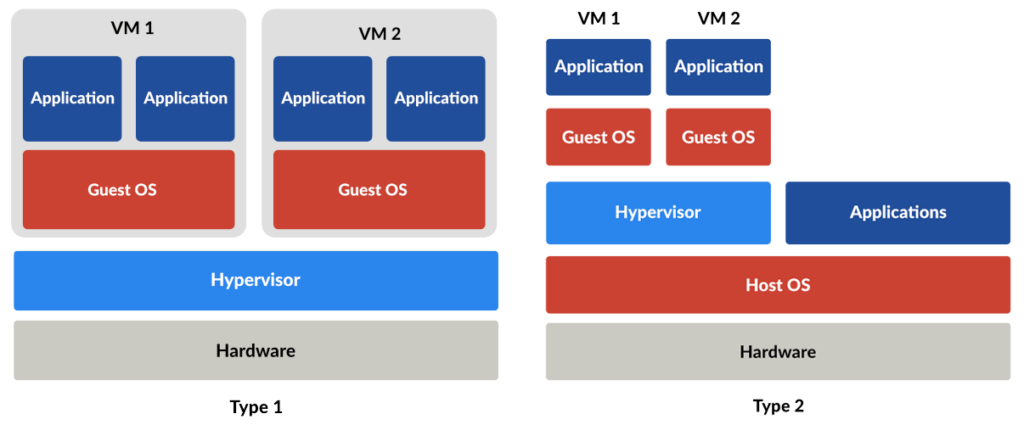
Cloud computing has changed how businesses work, it brings them more flexibility, productivity, efficiency and best of all, reducing costs. One of the important elements of cloud computing to run smoothly is the hypervisor, whose function is to run multiple operating systems using one host machine. In this post, we will dive into the idea of utilizing hypervisor, its role in cloud computing, and the technologies behind it.
Understanding the hypervisor
A hypervisor, or a virtual machine monitor (VMM), is a piece of software that lets you run multiple virtual machines on a single physical machine in the cloud, allowing users to install a virtual machine with any operating system without having to worry about getting the correct device drivers for the hardware, and it can also separate virtual machines from each other, so if one virtual machine is having problems, it would not affect the operation of other virtual machines. At the heart of cloud computing infrastructures, hypervisors are the backbone that makes it possible to provision and manage virtual machines on demand.
Types of hypervisor
There are two main types of hypervisors, Type 1 is the most commonly deployed type of hypervisor, and Type 2 is more suitable for certain projects.
Type 1 Hypervisor – A bare metal hypervisor is a type of virtualization that runs on the actual hardware and controls the operating systems as well as the physical resources. This hypervisor type provides outstanding performance and stability because it does not run inside Windows, instead, it is a simple operating system that is designed to run virtual machines.
Type 2 Hypervisor – Also known as a hosted hypervisor, sits on top of an existing operating system and uses its resources to create and manage virtual machines, Unlike type 1 hypervisors, hosted hypervisors do not have direct access to the primary hardware. They must go through the hardware’s OS to interact with its physical resources.

Why is hypervisor important and what are the benefits of using it
The hypervisor is vital for cloud computing in enabling efficiency, security, and flexibility and ensures the isolation of applications to prevent one virtual machine from accessing the resources of another. Hypervisors make it possible to create new virtual machines instantly, making it simple to allocate resources as needed for any workload, and since virtual machines run by the hypervisor are not dependent on a specific piece of hardware, workloads can easily be shifted to different servers or platforms as needed. By separating the hardware and software, a hypervisor makes desktop virtualization much more efficient.
The main benefit of hypervisors is their ability to allow multiple operating systems to run on a single host which makes it easier in a development environment, for instance, to test applications on various operating systems. It can also help with backward compatibility and cross-platform support when users need to run legacy applications.

Modern hypervisor applications
As virtualization technologies continue to advance, the capabilities of hypervisors have expanded beyond traditional server virtualization to encompass various virtualization models, such as:
Storage hypervisors – It is a software for storage virtualization that bridges the gap between physical storage devices and the virtualized environment. This layer combines multiple storage device types into virtual storage resources that can be created, resized, and used without interruption.
Network hypervisors – also known as network virtualization platforms or software-defined networking (SDN) controllers are a type of hypervisor that virtualizes network resources and services instead of computing resources like a traditional hypervisor does. They manage physical network resources such as routing, switching, load balancing, firewalls and virtual private networks. It can be used to either combine multiple physical networks into software-based networks or divide one physical network into multiple virtual networks.


